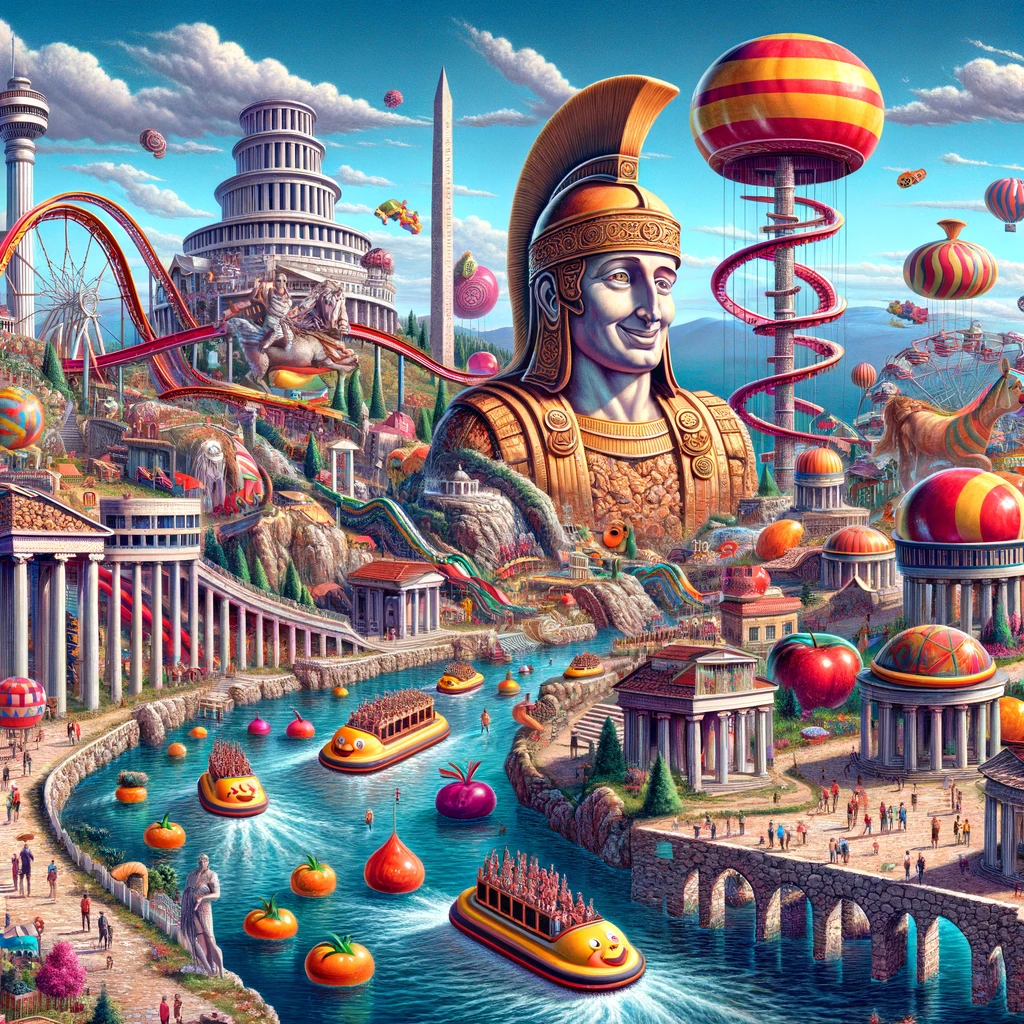Macedonia-land: The world’s most absurd theme park
Written 26 August 2014

Skopje, the capital of the Republic of Macedonia, may just be the strangest city in Europe. This city of 500,000 people has a history stretching back all the way to Roman times, and then served as an important center in the Balkan interior for both the Byzantine and the Ottoman Empires. It then switched hands between Bulgaria, Albania, and Serbia before eventually becoming part of Yugoslavia. Since the collapse of communism, it has served as the capital of Macedonia and has led its cultural life.
Skopje is also a macrocosm for the country. Unsurprising due to its history, the city is a multiethnic one, with a significant Albanian minority, and smaller minorities of Serbs, Turks, and Roma. Skopje thus represents the demographic makeup of the rest of the country, where, according to the last census in 2002, 64% is Macedonian, 25% is Albanian, and the rest is split between Turks, Roma, Serbs, etc. It is also a microcosm of the history of the country. While the Macedonian government is pushing through a far-fetched myth of the Macedonian nation which stretches back to Alexander the Great, the country’s more recent past is being forgotten.
Skopje 2014 is a program put in place by the currently ruling national-conservative VMRO-DPMNE (Internal Macedonian Revolutionary Organization – Democratic Party for Macedonian National Unity). The goal of the project is rebuild the Skopje city center in an image close to modern Macedonian national myth, a narrative which is promoted by VMRO. The myth presents Macedonia as a nation which has been at the forefront of not only Balkan history, but also European and world history. It claims Alexander the Great (along with many other ancient Hellenic figures) and several of the Tsars of the formidable Bulgarian Empire in the Middle Ages as being sons of Macedonia. All this is done with the narrative that Macedonia has been denied its nationhood in the past centuries and has been victimized by Bulgarians, Greeks, Albanians, Serbs, and Turks who have all played a role in diminishing its national heritage.
Indeed, this is reflected in the Skopje 2014 project. Along with the rebuilding of various government ministry buildings along neoclassical models, the project has built an astonishing amount of busts and statues (you could not walk around the new city center without encountering them at every step), triumphal arches, and pavilions. The most strongly featured monuments are anonymous — simply named Warrior and Warrior on a Horse — but are unmistakably supposed to represent Philip II and his son, Alexander the Great. Another major statue is the one dedicated to Tsar Samuil, one of the most famous Tsars of the Bulgarian Empire — but the fact that he was the leader of a Bulgarian state is not mentioned in the plaque meant to identify him. Instead he ruled over a “medieval state, the creation of which started in the territory of South-West Macedonia.”
While the project may seem amusing to outside observers, it is more concerning what the project is meant to cover up. Apart from the Yugoslav buildings which are being either replaced or torn down (replacing old communist buildings with more modern ones is not a unique trend in Eastern Europe) the new ministry buildings cover up an entire sector of the city. This sector is the Old Bazaar, a majority Muslim (consisting of Albanians, Turks, and Macedonian Muslims) area of Skopje which served as the main commercial center for the city during Ottoman times. As such, the sector is dominated by Ottoman architecture, with minarets and Turkish bathhouses being a major feature. The main language spoken here is Albanian, while Turkish and Macedonian are also heard. If I had not been specifically looking for it, I could have missed this part of the town altogether. It would thus not be surprising if many tourists have completely skipped over it, despite presenting some of the best-preserved Ottoman architecture in the region.
The goal of Skopje 2014, then, is not only to present an absurd national myth, but to also cover up the Ottoman past of Macedonia, an Ottoman past which includes the country’s minorities. One commentator has noted that the project has “a double goal, which is to marginalise the Albanians and create an identity that will not allow Albanians to become Macedonians.” For a country which has managed to avoid the wide-scale ethnic conflict seen in other Yugoslav republics, the trends that the ruling government is setting should be concerning. Indeed, ethnic flareups are not uncommon in the country, and I only managed to avoid the most recent events by a couple of weeks.